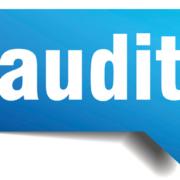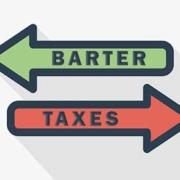Fall is in the air and that means it’s time to turn your attention to year-end tax planning. While several clear strategies and tactics emerged during the first tax filing season under the Tax Cuts and Jobs Act (TCJA), 2019 and subsequent years bring potential twists that must be considered, too. Let’s take a closer look at year-end tax planning strategies that can reduce your 2019 income tax liability.
Deferring income and accelerating expenses
Deferring income into the next tax year and accelerating expenses into the current tax year is a time-tested technique for taxpayers who don’t expect to be in a higher tax bracket the following year. Independent contractors and other self-employed individuals can, for example, hold off on sending invoices until late December to push the associated income into 2020. And all taxpayers, regardless of employment status, can defer income by taking capital gains after January 1. Be careful, though, because by waiting to sell you also risk the possibility that your investment might become less valuable.
Bear in mind, also, that there may be other reasons that taking the income this year can be more beneficial. For starters, future tax rates can go up. It’s possible that income tax rates might increase substantially by 2021, especially for those with higher incomes, depending on 2020 election results. In any event, in 2026, the higher tax rates that were in place for 2017 are scheduled to return.
Moreover, taxpayers who qualify for the qualified business income (QBI) deduction for pass-through entities (that is, sole proprietors, partnerships, limited liability companies and S corporations) could end up reducing the size of that deduction if they reduce their income. It might make more sense to maximize the QBI deduction — which is scheduled to end after 2025 — while it’s available.
Timing itemized deductions
The TCJA substantially boosted the standard deduction. For 2019, it’s $24,400 for married couples and $12,200 for single filers. With many of the previously popular itemized deductions eliminated or limited, some taxpayers can find it challenging to claim more in itemized deductions than the standard deduction. Timing, or “bunching,” those deductions may make it easier.
Bunching basically means delaying or accelerating deductions into a tax year to exceed the standard deduction and claim itemized deductions. You could, for example, bunch your charitable contributions if it means you can get a tax break for one tax year. If you normally make your donations at the end of the year, you can bunch donations in alternative years — say, donate in January and December of 2020 and January and December of 2022.
If you have a donor-advised fund (DAF), you can make multiple contributions to it in a single year, accelerating the deduction. You then decide when the funds are distributed to the charity. If, for instance, your objective is to give annually in equal increments, doing so will allow your chosen charities to receive a reliable stream of yearly donations (something that’s critical to their financial stability), and you can deduct the total amount in a single tax year.
If you donate appreciated assets that you’ve held for more than one year to a DAF or a nonprofit, you’ll avoid long-term capital gains taxes that you’d have to pay if you sold the property and (subject to certain restrictions) also obtain a deduction for the assets’ fair market value. This tactic pays off even more if you’re subject to the 3.8% net investment income tax or the top long-term capital gains tax rate (20% for 2019).
What if you’re looking to divest yourself of assets on which you have a loss? Rather than donate the asset, the better move from a tax perspective is more likely going to be to sell it to take advantage of the loss and then donate the proceeds.
Timing also comes into play with medical expenses. The TCJA lowered the threshold for deducting unreimbursed medical expenses to 7.5% of adjusted gross income (AGI) for 2017 and 2018, but it bounces back to 10% of AGI for 2019. Bunching qualified medical expenses into one year could make you eligible for the deduction.
You also could bunch property tax payments (assuming local law permits you to pay in advance). This approach might, however, bring your total state and local tax deduction over the $10,000 limit, which means that you’d effectively forfeit the deduction on the excess.
As with income deferral and expense acceleration, you need to consider your tax bracket status when timing deductions. Itemized deductions are worth more when you’re in a higher tax bracket. If you expect to land in a higher bracket in 2020, you’ll save more by timing your deductions for that year.
Loss harvesting against capital gains
2019 has been a turbulent year for some investments. Thus, your portfolio may be ripe for loss harvesting — that is, selling underperforming investments before year end to realize losses you can use to offset taxable gains you also realized this year, on a dollar-for-dollar basis. If your losses exceed your gains, you generally can apply up to $3,000 of the excess to offset ordinary income. Any unused losses, however, may be carried forward indefinitely throughout your lifetime, providing the opportunity for you to use the losses in a subsequent year.
Maximizing your retirement contributions
As always, individual taxpayers should consider making their maximum allowable contributions for the year to their IRAs, 401(k) plans, deferred annuities and other tax-advantaged retirement accounts. For 2019, you can contribute up to $19,000 to 401(k)s and $6,000 for IRAs. Those age 50 or older are eligible to make an additional catch-up contribution of $1,000 to an IRA and, so long as the plan allows, $6,000 for 401(k)s and other employer-sponsored plans.
Accounting for 2019 TCJA changes
Most — but not all — provisions of the TCJA took effect in 2018. The repeal of the individual mandate penalty for those without qualified health insurance, for example, isn’t effective until this year. In addition, the TCJA eliminates the deduction for alimony payments for couples divorced in 2019 or later, and alimony recipients are no longer required to include the payments in their taxable income.
Act now
The future of tax planning is uncertain — even without dramatic change in Washington, D.C., many of the most significant TCJA provisions are set to expire within six years. Contact us for help with your year-end tax planning.
© 2019











